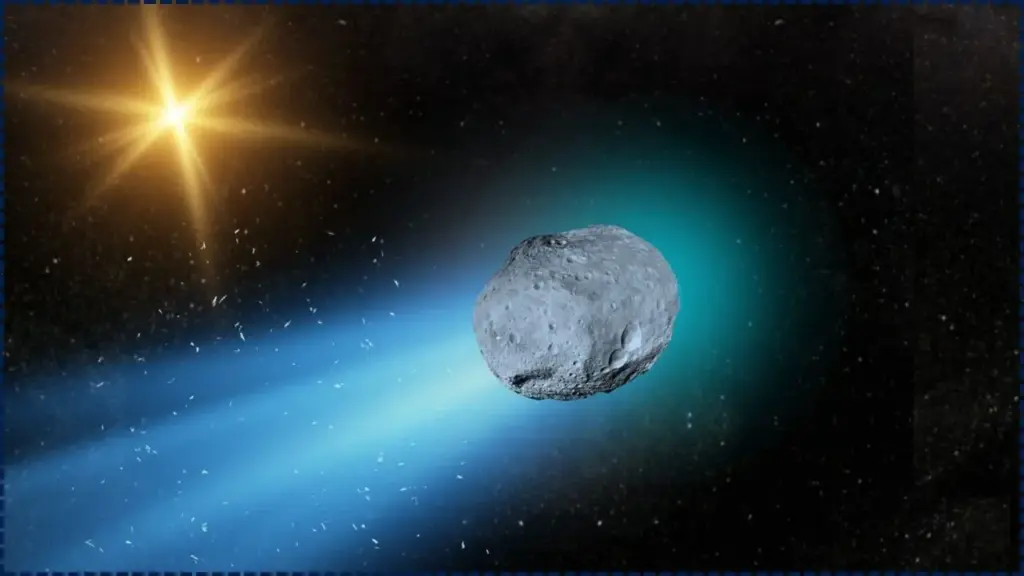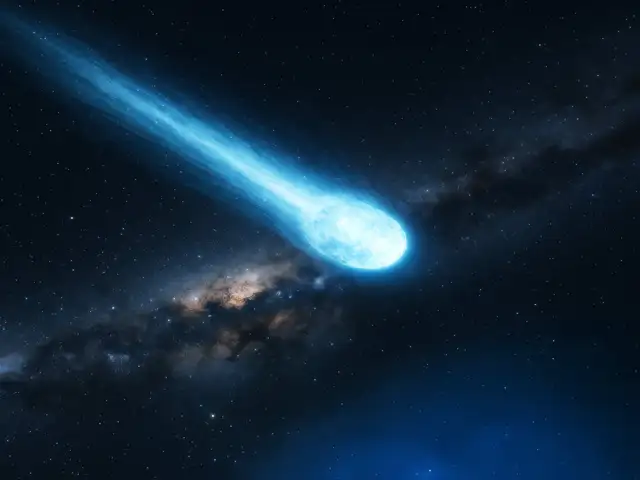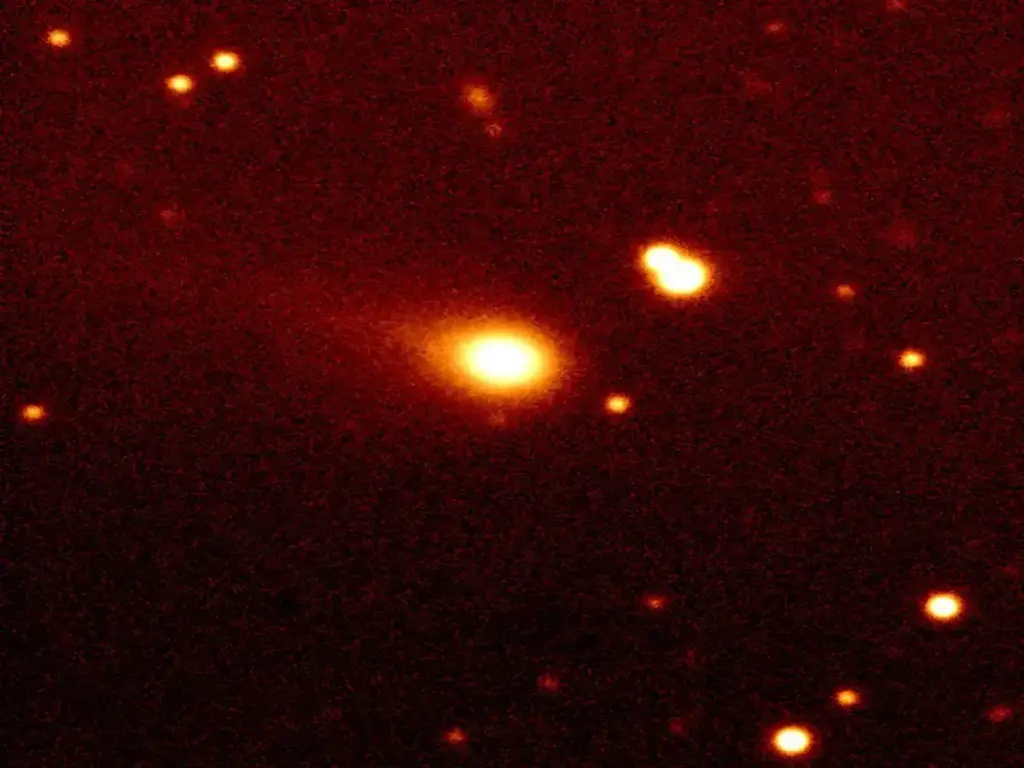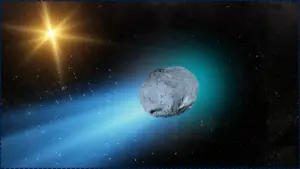An interstellar object named 3I/ATLAS has reignited public fascination with cosmic mysteries after Harvard astrophysicist Avi Loeb proposed it might be emitting a “man-made” metal alloy. The claim, reported in mid-October 2025, followed early spectroscopic analyses showing an unusual chemical signature—strong nickel emissions with little or no iron.

Table of Contents
Interstellar Comet 3I/ATLAS
| Key Fact | Detail / Statistic |
|---|---|
| Discovery Date | July 1, 2025 |
| Object Type | Interstellar comet (hyperbolic orbit) |
| Unusual Feature | Nickel emission without accompanying iron |
| Closest Solar Approach | October 30, 2025, at ~1.4 AU |
| Official Confirmation of Artificial Alloy | None to date |
A Discovery That Captured the World’s Attention
The finding, if verified, would mark the first evidence of a non-natural alloy outside Earth. But many astronomers caution that the data remain preliminary, emphasizing that independent verification and peer review are essential before drawing extraordinary conclusions.
What We Know About 3I/ATLAS
The Asteroid Terrestrial-impact Last Alert System (ATLAS), operated by the University of Hawai‘i, discovered 3I/ATLAS on July 1, 2025. NASA later confirmed its hyperbolic trajectory, indicating an origin beyond the solar system. It is only the third interstellar visitor detected after 1I/ʻOumuamua in 2017 and 2I/Borisov in 2019.
Estimates suggest a diameter between 0.4 and 5.6 kilometers, comparable to Manhattan Island. The comet will make its closest approach to the Sun on October 30, 2025, before exiting the solar system forever.
“Interstellar objects let us sample materials from other star systems,” said Dr. Kelly Fast, NASA’s Near-Earth Object Observations program manager. “Each one offers a rare glimpse into galactic diversity.”

The ‘Man-Made Metal Alloy’ Hypothesis
Loeb, chair of Harvard’s Astronomy Department emeritus, wrote in a Medium essay that 3I/ATLAS emits nickel gas at about four grams per second with no detectable iron. Such a ratio, he argued, resembles nickel-tetracarbonyl, a compound used in human industrial metallurgy.
“If confirmed, this could indicate technological processing,” Loeb said. “We must investigate without prejudice but with scientific discipline.”
His suggestion, that the object might be artificial or engineered, drew swift public attention—and equal skepticism.
Scientific Reaction and Peer-Review Status
No peer-reviewed paper has yet corroborated Loeb’s data. NASA and other institutions have not released official compositional analyses showing a “man-made” substance.
Dr. Jason Wright of Pennsylvania State University called the idea “speculative,” saying the observed spectra could reflect natural nickel enrichment or measurement errors.
“Until verified by independent teams, we cannot treat this as evidence of technology,” Wright said.
Dr. Emily Lakdawalla, a planetary geologist and author, added that nickel-iron separation can occur naturally under certain thermal or oxidation conditions.
“Planetary processes are complex,” she said. “Nature can produce surprising results without invoking industry or aliens.”
Peer reviewers note that Loeb’s analysis appears in preprint form only, meaning the data have not undergone formal validation by the broader scientific community.
NASA’s and ESA’s Official Position
NASA describes 3I/ATLAS as “an object of scientific interest, but one whose composition remains uncertain.” Its official statement stresses ongoing observations and urges against premature conclusions.
The European Space Agency (ESA) and Japan Aerospace Exploration Agency (JAXA) have joined in global monitoring, using infrared telescopes in Spain, Chile, and Japan. Data from the James Webb Space Telescope (JWST) are expected to refine estimates of surface composition later this year.
“We are still in data-gathering mode,” said Dr. Mark McCaughrean, ESA’s senior advisor for science. “So far, we see intriguing spectra—but nothing beyond natural explanation.”
Historical Context: The Oumuamua Precedent
The 3I/ATLAS debate echoes the controversy over 1I/ʻOumuamua, the cigar-shaped interstellar object detected in 2017. Loeb similarly argued that its non-gravitational acceleration might have been driven by artificial propulsion. Most astronomers later attributed that motion to outgassing of hydrogen ice—a natural process.
These past debates illustrate how limited data can fuel speculation. With interstellar objects often visible for only months, scientists must draw conclusions from incomplete observations, leaving room for bold but uncertain theories.
Global Efforts and Future Research
As 3I/ATLAS nears its perihelion, observatories from Chile to Hawaii are collecting high-resolution spectra. NASA has also discussed potential rapid-response intercept missions—concept spacecraft designed to study future interstellar visitors at close range.
The European Southern Observatory and private partners like Breakthrough Initiatives have expressed interest in coordinating such missions if another interstellar object is detected early enough.
“We missed the chance to visit ʻOumuamua,” said Dr. Sara Seager of MIT. “The next one, we’ll be ready.”
Public Communication and Media Sensation
The claim’s dramatic phrasing—“man-made metal”—spread rapidly through tabloids and online media. Experts warn that sensational reporting can erode public trust in legitimate space research.
“Headlines often leap from anomaly to aliens,” said Dr. Nadine Barlow, a planetary scientist at Northern Arizona University. “We need transparency and patience, not sensationalism.”
NASA and university communicators have since emphasized the difference between hypothesis and evidence, encouraging the public to follow official updates rather than viral interpretations.

Peer Review and Scientific Accountability
The controversy underscores the importance of scientific process. Before any claim can be accepted, raw data must be shared, methodologies replicated, and results published in journals like Nature Astronomy or The Astrophysical Journal.
Several teams from the European Southern Observatory (ESO) and Caltech have already begun cross-checking spectral data. Their results, expected in early 2026, should clarify whether 3I/ATLAS’s emissions truly deviate from natural expectations.
Related Links
Engineer Claims Breakthrough Method to Overcome Earth’s Gravity: A New Era in Space Propulsion
Looking Ahead
Even if 3I/ATLAS proves entirely natural, scientists agree that interstellar objects represent new frontiers in planetary science. Each detection improves our understanding of other solar systems and may eventually inform sample-return missions.
“Whether it’s a rock or a relic, it’s a gift,” Loeb told reporters. “Every interstellar visitor expands our cosmic perspective.”
As the comet continues its journey past the Sun, astronomers will watch closely, balancing curiosity with caution—an enduring lesson in how science confronts the unknown.
Final Paragraph
As observation campaigns intensify, the world watches 3I/ATLAS glide through the inner solar system—a visitor from another star carrying either the secrets of natural cosmic chemistry or the faintest hint of something more. For now, scientists agree on one point: evidence must lead, not imagination.
FAQ About Interstellar Comet 3I/ATLAS
Has a man-made alloy been confirmed on 3I/ATLAS?
No. The claim remains unverified and outside peer-reviewed literature.
Why is the nickel-to-iron ratio controversial?
Because such ratios are rare in natural comets. However, natural explanations remain plausible.
Will spacecraft study 3I/ATLAS directly?
Not this time. But new mission concepts aim to intercept future interstellar objects for close-up study.



















